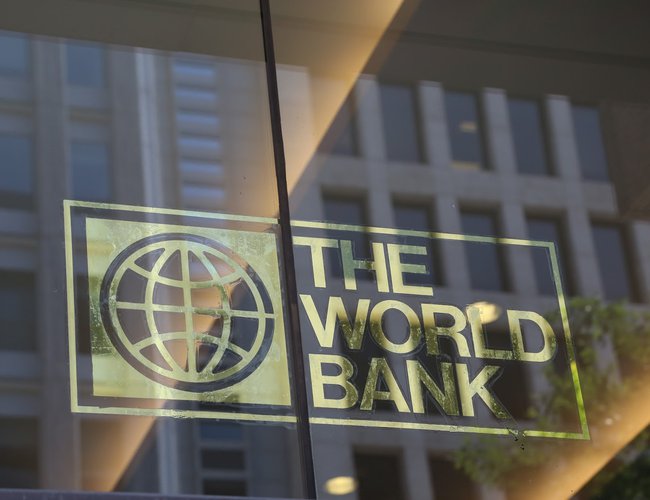
If Nepal Acts Now, Children Born Today Could Be Healthier, Wealthier, More Productive. New World Bank Human Capital Index measures how much countries lose in economic productivity by underinvesting in their people
Nepal’s score of 0.49 out of a maximum possible score of 1 means that a child born in Nepal today will be 49 percent as productive when she grows up as she could be if she enjoyed complete education and full health. The HCI highlights that Nepal is a good performer with respect to childhood survival: 97 out of 100 children born today survive to the age of five.
A significant proportion of these children, however, suffer from stunting: 36 out of 100 children are stunted, meaning they carry a lifelong risk of cognitive and physical limitations. The education component of the HCI shows that children in Nepal can expect to complete 11.7 years of school by age 18. However, when years of schooling are adjusted for quality of learning, this is only equivalent to 6.9 years: a learning gap of 4.8 years.
“Nepal’s human capital index is higher than the average for its region and income group, which is a positive sign,” said Faris Hadad-Zervos, World Bank Country Manager for Nepal. “To further improve this, the World Bank is committed to working with the Government of Nepal to mobilize better and more efficient investment in people to ensure a globally competent generation.”
New World Bank research released today gives policymakers compelling evidence that delivering better outcomes in children’s health and learning can significantly boost the incomes of people—and of countries—with returns far into the future.
A Human Capital Index, launched today at the World Bank-IMF Annual Meetings, shows that 56 percent of children born today across the world will lose more than half their potential lifetime earnings because governments are not currently making effective investments in their people to ensure a healthy, educated, and resilient population ready for the workplace of the future.
Human capital—the knowledge, skills, and health that people accumulate over their lives—has been a key factor behind the sustained economic growth and poverty reduction rates of many countries in the 20th century, especially East Asia.
“For the poorest people, human capital is often the only capital they have,” World Bank Group President Jim Yong Kim said. “Human capital is a key driver of sustainable, inclusive economic growth, but investing in health and education has not gotten the attention it deserves. This index creates a direct line between improving outcomes in health and education, productivity, and economic growth. I hope that it drives countries to take urgent action and invest more – and more effectively – in their people.
The bar is rising for everyone” Kim added. “Building human capital is critical for all countries, at all income levels, to compete in the economy of the future.”
The Human Capital Index measures the amount of human capital that a child born today can expect to attain by age 18, given the risks of poor health and education that prevail in the country where he or she lives. The Index measures each country’s distance to the frontier of complete education and full health for a child born today. The measure includes:
Survival – Will children born today survive to school age?
School – How much schooling will they complete and how much will they learn?
Health – Will they leave school in good health, ready for further learning and/or work as adults?
The HCI reflects the productivity as a future worker of a child born today, compared with what it could be if he or she had full health and complete, high-quality education, on a scale from zero to one, with 1 as the best possible score. A country score of 0.5, for example, means that individuals – and the country as a whole – are forgoing half their future economic potential. Calculated over 50 years, this translates into deep economic losses: a 1.4 percent annual loss in GDP growth.
The Index ranks where each country is now in terms of productivity of the next generation of workers. In countries like Azerbaijan, Ecuador, Mexico, and Thailand, children born today would be 40 percent more productive as workers in the future if they enjoyed complete education and full health. In countries like Morocco, El Salvador, Tunisia and Kenya, 50 percent more.
Sex-disaggregated data is available for 126 of the Index’s 157 countries. For this subset of countries, both boys’ and girls’ human capital is still far from the frontier of potential human capital accumulation. In most countries, the human capital gap for both boys and girls from the frontier is larger than the gap between boys and girls.
The Index is part of the World Bank Group’s Human Capital Project, which recognizes human capital as driver of inclusive growth. In addition to the Index, the Human Capital Project includes a program to strengthen research and measurement on human capital, as well as support to countries to accelerate progress in human capital outcomes.
The Index is included in the forthcoming World Development Report 2019 on the Changing Nature of Work, which addresses the importance of investing in human capital to prepare for the future of work.
- Three-Day Global Science-Policy Forum: Socially Inclusive Solar Irrigation Systems Concluded
- Apr 26, 2024
- Nepal And China Ink Two Agreements , PM Prachanda Meets Chinese Delegation
- Apr 26, 2024
- Nepal Army Held National Cyber Security Symposium
- Apr 26, 2024
- Nepal’s Investment Landscape Revitalize By Nine Ordinances: FNCCI President Dhakal
- Apr 26, 2024
- Weather Forecast: Partly Cloudy In Hilly region And Mainly Fair In Plain Areas
- Apr 26, 2024
















